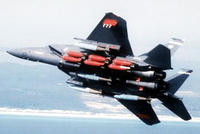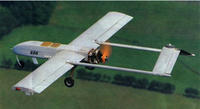-
Brazil uses chemical "fingerprints" to trace trafficked cocaine
Brazilian federal police have used chemical profiling to determine that cocaine is being trafficked into the country via new routes; they are now compiling the most comprehensive database of the chemical fingerprints of illicit drugs in South America, which will be used to pinpoint where the cocaine is originally made
-
-
Experts: Israel used cyber weapon to disrupt Iran's nuclear reactor

The Stuxnet malware has infiltrated industrial computer systems worldwide in July and August; now, cyber security experts say that the worm was, in fact, is a search-and-destroy cyber weapon meant to hit a single target — Iran’s Bushehr reactor; Stuxnet amazed — and stunned — computer security experts: too large, too encrypted, too complex to be immediately understood, it employed amazing new tricks, like taking control of a computer system without the user taking any action or clicking any button other than inserting an infected memory stick; in Stuxnet, the world faces a new breed of malware that could become a template for attackers wishing to launch digital strikes at physical targets worldwide — Internet link not required
-
-
Russia cancels S-300 delivery to Iran
The Russia-made S-300 is the most sophisticated air defense system in the world, and Iran signed a contract to buy them in order to protect its nuclear weapons facilities; Russia has now decided to abrogate the contract — meaning that Iran’s nuclear facilities remain exceedingly vulnerable to destruction from the air, and that the option of attacking these facilities is less daunting than would have been the case otherwise
-
-
Vehicle escape windows increase soldiers' safety
BAE receives a $70 million contract to install Vehicle Emergency Escape (VEE) Windows to more than 39,000 U.S. Army vehicle, with more than 16,000 kits already shipped; the patent pending system features a simple, intuitive design that enables soldiers quickly to exit the vehicle in case of an emergency
-
-
Resurgent Irish terrorism on agenda North and South
Irish politicians on both sides of the border say resurgent Republican terrorism is a growing problem; tensions grown as community leaders charge that the Northern Irish police have turned a blind eye to the killing of a Belfast man by the Protestant Ulster Volunteer Force (UVF); intelligence sources say the UVF leadership authorized the killing because the man “had flouted their authority”
-
-
Australia: "high risk" of terrorism at Commonwealth Games in India
Australia says there is a “high risk of terrorist attack” in New Delhi as the Indian capital prepares to host the Commonwealth Games, scheduled for 3-14 October; the U.S. State Department issued a travel alert on 1 September urging U.S. citizens to be cautious of their security if they travel to India during the Games
-
-
Delhi proposes unprecedented security at Commonwealth games
The security measures India has put in place for the Commonwealth Games surpass those instituted for Delhi’s Independence Day and Republic Day; in all, the Games will be secured by more than 80,000 Delhi police personnel, 17,500 paramilitary personnel, 3,000 commandos, 100 anti-sabotage teams, more than 200 dogs, and 15 bomb squads
-
-
Crash of UAV copter with foliage-penetrating radar sheds light on secret program
Two emerging security challenges to the United States — the growing violence of the drug war south of the border, and growing concerns about climate change-driven conflicts in Africa and Asia — have led DARPA to fund the development of technology that will allow U.S. special forces to see through the dense canopy of a jungle; the recent crash, during trials, in the jungle of Belize of a Boeing A160T equipped with foliage-penetrating radar sheds some light on this programs; spokesman of the U.S. Special Operations Command (SOCOM) said more than 90 percent of the objectives of the Belize trials had been met when the crash terminated the effort
-
-
Sandia Labs developed an IED-disabling water-blade device
A device developed by Sandia National Laboratories researchers that shoots a blade of water capable of penetrating steel is headed to U.S. troops in Afghanistan to help them disable deadly IEDs; the portable clear plastic device is filled with water and an explosive material is placed in it that, when detonated, creates a shock wave that travels through the water and accelerates it inward into a concave opening; when the water collides, it produces a thin blade
-
-
New helmets to make soldiers more alert, reduce stress, pain
New helmet to enhance U.S. soldiers’ cognitive abilities, improving long-term alertness, and reducing stress, anxiety, and pain; DARPA-funded research looking to equip helmets with noninvasive technology for “transcranial pulsed ultrasound,” which can remotely stimulate brain circuits
-
-
EMP threat to U.S. should be kept in perspective
In 1962 the United States conducted a high-altitude nuclear test above Johnston Island, 825 miles southwest of Hawaii; detonated 400 kilometers above the island, the resulting nuclear blast knocked out street lights across Hawaii and tripped circuit breakers, triggered burglar alarms, and damaged a telecommunications relay facility on the island of Kauai; could terrorist, or a nuclear-armed rogue state, launch an EMP Pearl Harbor against the United States?
-
-
Israel, Russia in joint venture to develop UAVs
There may be political tensions between Russia and Israel, but military cooperation is tightening; the two countries have agreed to form a joint venture to develop and produce UAVs, and signed a military cooperation agreement, paving the way for more cooperation in the fields of unmanned systems, counter terrorism, and asymmetric, urban warfare
-
-
Fake chips from China threaten U.S. military systems

To withstand the rigors of battle, the Defense Department requires the chips it uses to have special features, such as the ability to operate at below freezing temperatures in high-flying planes; because it pays extra for such chips, experts say, the Defense Department has become a prime target for counterfeiters, most of them Chinese companies; from November 2007 through May 2010, U.S. Customs officials said they seized 5.6 million bogus chips — yet many more are finding their way into the United States and even the military
-
-
The U.S. military prepares for the coming conflicts triggered by climate change
The popular debate surrounding “global warming” is rife with emotion and has paralyzed U.S. policymakers; military planners, however, remain divorced from the emotional content of the topic, looking at possible future scenarios and conducting planning to address the associated challenges and threats arising from sharp changes in climate
-
-
The laser designator-equipped Shadow UAV offers smart bombs more precision

The light weight laser designators enable the UAV to designate targets for laser guided smart bombs when more accuracy than GPS guided weapons is needed: GPS guided weapons hit within a 10 meter/31 foot circle, while laser guidance is good for 1-2 meters, or 3-6 feet
-
More headlines
The long view
Factories First: Winning the Drone War Before It Starts
Wars are won by factories before they are won on the battlefield,Martin C. Feldmann writes, noting that the United States lacks the manufacturing depth for the coming drone age. Rectifying this situation “will take far more than procurement tweaks,” Feldmann writes. “It demands a national-level, wartime-scale industrial mobilization.”
